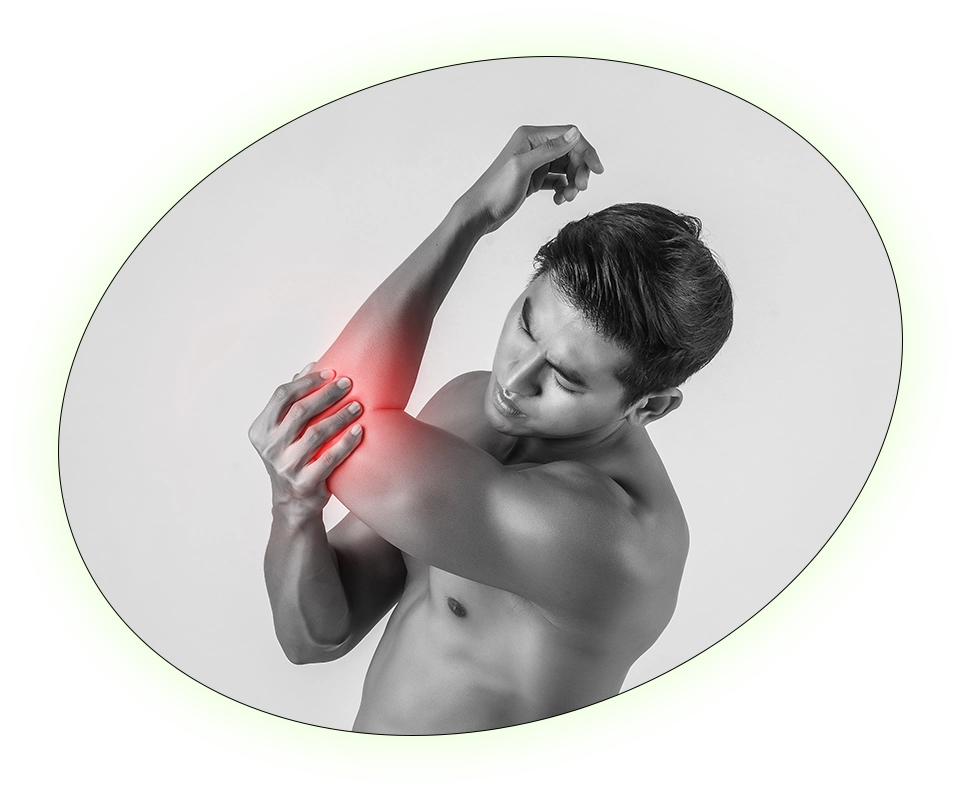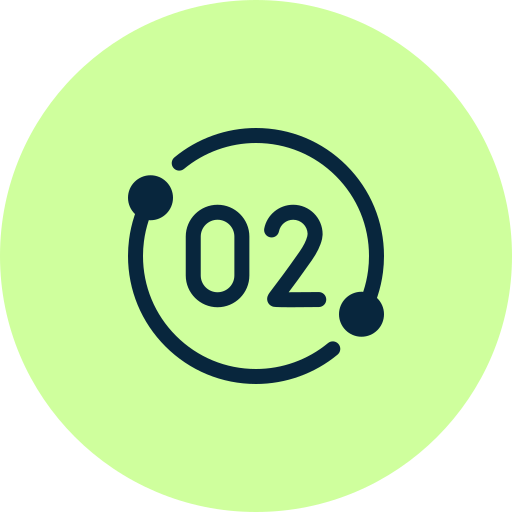Arm Pain
Arm pain can be a frustrating and limiting condition, affecting everything from simple daily tasks to work performance. Whether it’s a dull ache, sharp discomfort, or tingling sensation, arm pain can disrupt your mobility and impact your quality of life. Ignoring it can lead to worsening symptoms and long-term complications, making early recognition crucial.

Arm pain stems from a variety of sources, ranging from overuse injuries and muscle strain to nerve compression and systemic conditions.
Overuse and repetitive strain from activities like typing, lifting, or sports-related motions can lead to persistent discomfort. Additionally, nerve compression conditions, such as carpal tunnel syndrome, may cause symptoms like numbness, tingling, and weakness, affecting daily function and mobility.
Fractures & Sprains: Sudden injuries from falls or accidents often result in sharp, intense pain.
Inflammation & Arthritis: Joint pain and stiffness may indicate chronic inflammatory conditions.
Systemic conditions, such as heart problems or diabetes-related neuropathy, can lead to radiating pain that may affect various parts of the body and indicate underlying health concerns.
It may develop gradually or suddenly, often linked to repetitive movements, trauma, or inflammation. In some cases, it may signal a more serious underlying issue, such as a cardiac event. Understanding the root cause is the first step toward effective management.
Arm pain can be short-term or chronic, with causes ranging from overuse and injury to nerve damage and medical conditions. It can restrict movement, making daily tasks difficult. Pinched nerves may cause radiating pain, while pain with chest tightness could signal a heart attack. Early detection and prevention can help avoid long-term issues.

Acute pain resolves quickly, while chronic pain lasts for months and may worsen over time.

Overuse, injury, nerve damage, or underlying medical conditions are key contributors.

Arm pain can restrict simple actions like gripping, lifting, or even resting comfortably.

Pinched nerves in the neck, spine, or wrist can cause radiating pain down the arm.

Arm pain combined with chest tightness or shortness of breath may indicate a heart attack.

Addressing early warning signs can prevent long-term complications and chronic discomfort.
Arm pain results from multiple sources, including:

Fractures, sprains, and strains from falls, sports, or accidents.

Pinched nerves, carpal tunnel syndrome, or cervical spine issues leading to shooting pain.

Arthritis, tendinitis, and bursitis causing swelling and joint discomfort.

Fibromyalgia, diabetes-related nerve damage, or even heart-related issues.

How Arm Pain Disrupts Your Daily Life
Arm pain can interfere with even the simplest tasks, making once-effortless movements difficult and painful. Whether at work, home, or during exercise, persistent arm pain can lower your efficiency and overall well-being.
Ignoring arm pain can worsen your condition and limit your daily life. Take charge of your health today—address your symptoms early to prevent long-term complications.
Manage and Prevent Arm Pain Effectively

Give your muscles and joints time to heal.

Improve flexibility and prevent strain.

Ice, heat therapy, and stretching.

Improve posture and workplace setup.

Seek professional assessment for persistent pain.
Here are some of the questions that we are asked most frequently at Total Spine and Wellness
Regenerative medicine aims to replace damaged tissue or organs caused by factors like age, disease, trauma, or congenital issues, as opposed to focusing solely on symptom management. This is achieved through the use of tissue engineering, cellular therapies, medical devices, and artificial organs.
By combining these approaches, we can enhance our body’s natural healing process where it is most needed. Regenerative medicine brings together experts from various specialties who wish to be on the cutting edge of medicine.
When our bodies are injured or affected by disease, they possess an innate ability to heal and defend themselves. What if we could harness this inherent power and accelerate the healing process in a clinically relevant manner? What if we could aid the body in healing more effectively?
The promising field of regenerative medicine strives to restore the structure and function of damaged tissues and organs. It also aims to develop solutions for organs that have sustained permanent damage. Ultimately, the goal of regenerative medicine is to create transformative healthcare solutions that could potentially help injuries and diseases that were previously deemed untreatable.
Stem cells are undifferentiated cells in our bodies that have the remarkable ability to develop into various types of specialized cells. They can divide and renew themselves to form more stem cells or differentiate into specific cell types, such as muscle, nerve, or blood cells. Stem cells play a crucial role in the development, growth, and repair of tissues and organs in our bodies. They hold great potential for medical research and regenerative medicine, as they may be used to treat a wide range of diseases and injuries.
Stem cells have the remarkable ability to develop into different cell types in the body and can also repair damaged tissues. When introduced into a specific area, they can promote healing through various mechanisms. Stem cells can differentiate into the desired cell type, replacing damaged cells directly. They can also secrete growth factors and proteins that stimulate the surrounding cells to regenerate and repair themselves. Additionally, stem cells can modulate the immune response and reduce inflammation, creating a more favorable environment for healing. These combined effects make stem cells a valuable tool for treating degenerative conditions.
Mesenchymal stem cells (MSCs) are a promising source for the treatment of OA due to their multipotency for differentiation into chondrocytes and their ability to modulate the immune system.
These surgical procedures are considered part of a physician’s practice of medicine, allowing both the physician and patient to freely consider their preferred treatment options. While the FDA does provide guidelines for the treatment and manipulation of a patient’s own tissues, Total Spine adheres to these guidelines by offering same-day treatment using the patient’s unaltered cells, which are inserted during the procedure.
Not everyone is a good candidate for stem cell treatment. We offer a complimentary consultation and imaging review to determine if someone is likely to benefit from our treatments. If the severity of the condition is too great and a successful outcome is not likely, the patient will be told that in consultation.
We are a team of highly specialized spine surgeons dedicated to pioneering the future of spine care.